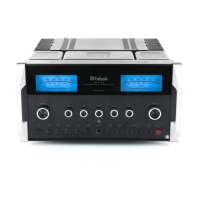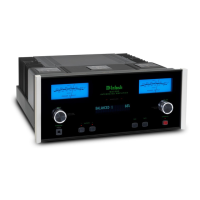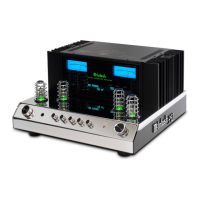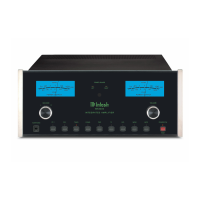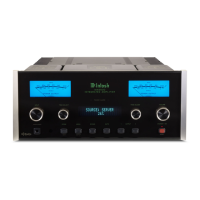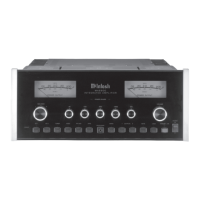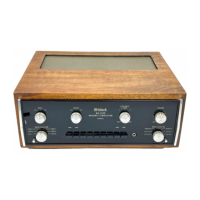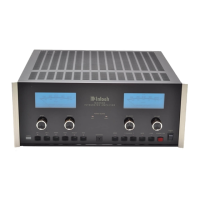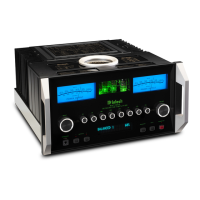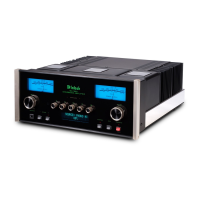
Do you have a question about the McIntosh MA7900 and is the answer not in the manual?
Overview of the MA7900's features, power, and operational notes.
Details on various connectors: XLR, Data Ports, RS232, IR IN, and Plug-In Jumper.
Overview of the MA7900 Integrated Amplifier and its sonic qualities.
Details key features: Power Output, Power Guard, Digital Inputs, EQ, and more.
Connecting power and data cables for automatic switching and remote operation.
Connecting audio sources, optional digital inputs, USB, and ground connections.
How to connect an external sensor for remote control.
Detailed steps for connecting loudspeaker hookup cables to the MA7900 amplifier.
Guidance on wire gauge, terminal preparation, and safety precautions for loudspeaker connections.
Selecting sources and adjusting listening volume using the remote control.
Using remote buttons for disc players, music servers, and tuner functions.
Accessing and adjusting trim functions, and amplifier output selection.
Using the input, trim, and volume controls for source selection and level adjustment.
Controlling speaker outputs (1 & 2) and using the headphone jack.
Operating equalizer, bypass, mute functions, and understanding display indicators.
Using the standby/on button and understanding the reset function.
Overview of factory default settings for various functions and their corresponding page numbers.
How to identify the System and USB Audio firmware versions using the setup mode.
How to reassign high-level inputs to balanced or digital connectors.
Enabling Passthru mode for multichannel systems and selecting the input source.
Configuring Power Control Trigger outputs for various activation methods.
Switching between Normal and Alternate Remote Control codes to prevent interference.
Managing the automatic power saving standby/off mode and how to disable it.
Steps to turn the MA7900 on and off, and initial startup indications.
Selecting desired input sources and adjusting listening volume levels.
Adjusting channel balance and enabling/bypassing the equalizer.
Setting relative volume levels for different sources to ensure consistent listening.
Changing the audio mode from Stereo to Mono for individual input sources.
Adjusting MC phono cartridge loading values for optimal performance.
Adjusting the brightness of the front panel display.
Controlling digital audio display info and meter illumination.
Bypassing equalizer and accessing trim functions for audio adjustments.
Muting audio output and connecting headphones for private listening.
Understanding power meters and the function of power guard indicators.
Steps for selecting a source and making a recording using the MA7900.
Methods for integrating separate power amplifiers with the MA7900.
Connecting an external amplifier to Output 2 for remote listening.
How the Passthru mode functions with multichannel systems and A/V control centers.
Details on the five-band equalizer controls and their effect on frequency ranges.
Operating digital inputs and USB connection with a computer.
Resetting microprocessors and restoring all adjustable settings to factory defaults.
